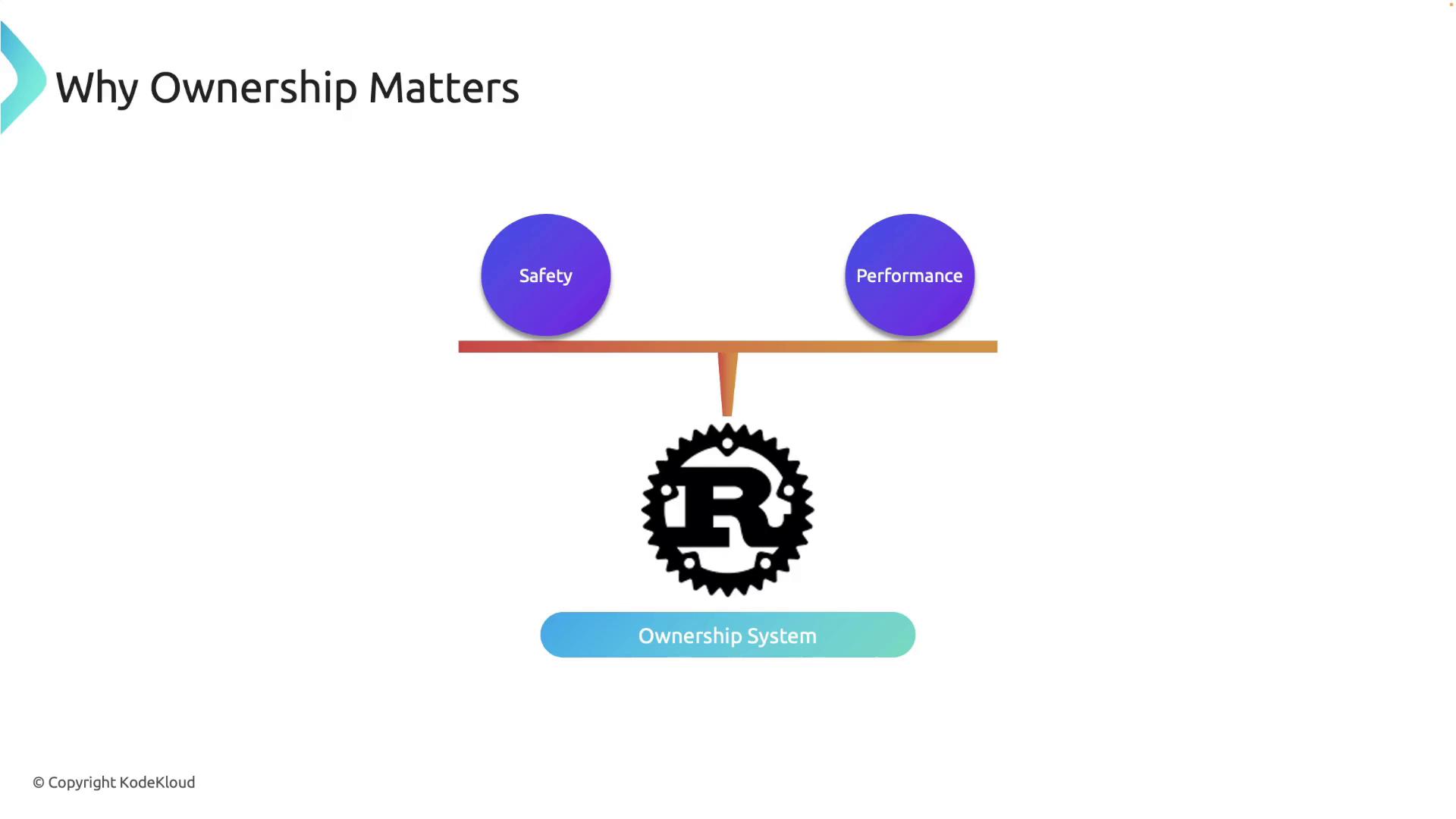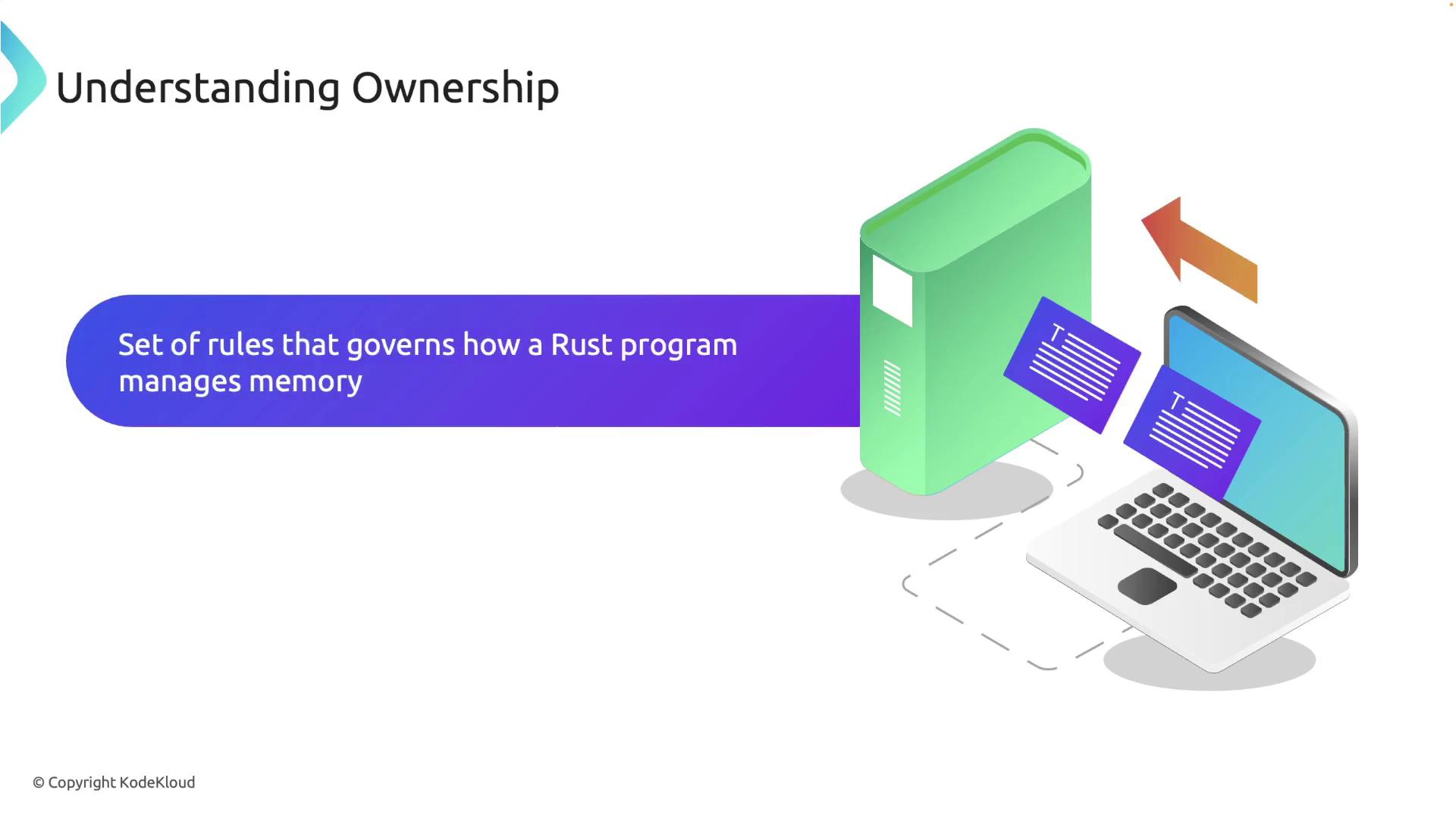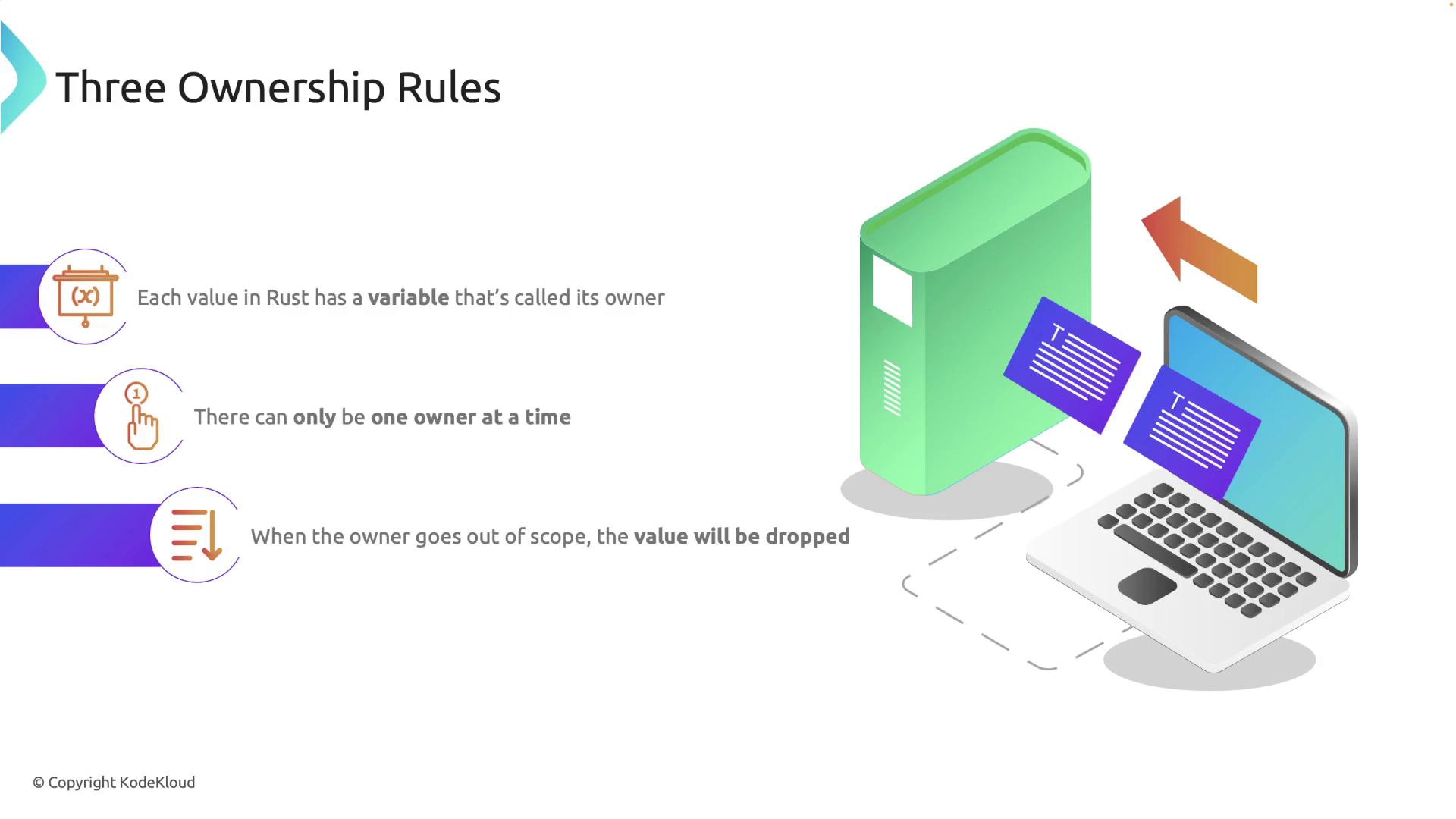Rust Programming
Ownership
Introduction
Rust is a systems programming language designed for performance, safety, and concurrency. One of its most notable features is the ownership system—a unique approach to memory management that provides memory safety guarantees without relying on a garbage collector. For those new to Rust, mastering the ownership system is essential. Though it may seem challenging at first, the principles become intuitive with practice and are fundamental for writing efficient and safe Rust code.
In this lesson, we explore Rust’s ownership model, discuss its core rules, and examine its impact on memory management. Rust stands out for several reasons:
- Memory Safety: Rust eliminates errors such as null pointer dereferencing and buffer overflows at compile time.
- Performance: Using zero-cost abstractions, Rust offers system-level control comparable to C and C++.
- Concurrency: The language prevents data races, enabling safe and efficient concurrent programming.
- No Garbage Collection: Rust’s ownership system ensures predictable performance by managing memory without garbage collection.
Key Point
Rust’s ownership system enforces strict compile-time rules that guarantee memory safety and reliability, making it a compelling alternative to manual memory management or garbage collection.

What Is Ownership?
Ownership in Rust defines the rules for how memory is managed. Although the rules are straightforward, they have a profound effect on program behavior. Here are the key ownership rules:
- Each value has a single owner: Every value in Rust is associated with a variable.
- Exclusive ownership: A value can have only one owner at a time.
- Automatic deallocation: When the owning variable goes out of scope, the value is dropped and its memory is deallocated.
These rules promote automatic and error-free memory management, helping to prevent issues like dangling pointers and double frees.

The diagram below visually summarizes these three ownership rules:

An Example of Ownership
Consider the following Rust example. It demonstrates how a string, allocated on the heap, is owned by the variable s:
fn main() {
let s = String::from("hello"); // s comes into scope and owns the string
// perform operations with s
} // s goes out of scope and the string is dropped, deallocating the memory
In this scenario, the string is allocated on the heap and is owned by s. Once s goes out of scope at the end of the main function, Rust automatically deallocates the memory used by the string. This process—where the value is dropped when its owner goes out of scope—is integral to Rust’s memory management.
Remember
In Rust, understanding when and how memory is allocated and deallocated is crucial for writing efficient and safe code. The ownership rules ensure that memory is managed predictably and safely.
As we progress, we will delve deeper into heap allocation and explore the intricacies of the ownership system, further enhancing your understanding of Rust's unique approach to memory management.
Watch Video
Watch video content